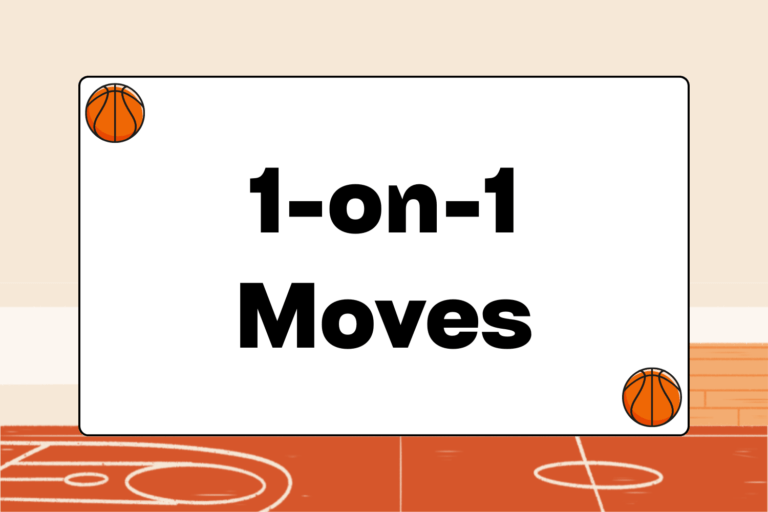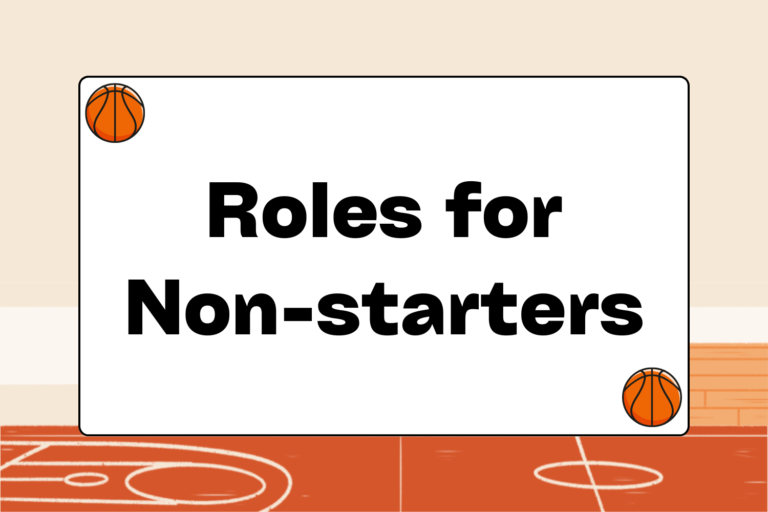Before learning how to handle pressure situations in basketball, it’s important to understand what pressure is. Pressure is a normal physical reaction to stressful conditions. It happens to everyone — some people are just more prepared to handle this strain than others. It’s okay to feel pressure in basketball — as long as you put in the necessary work to defeat it.
Pressure Situations in Basketball
Basketball has as many pressure-packed game situations as any sport. The glare of the spotlight is closer in basketball, and the stress of a game can find any player on the floor at any time. It’s impossible to play competitive basketball and not find yourself in a nerve-racking situation. Pressure comes in many different forms, including:
- Stifling defense
- Last-minute game situations
- Fear of failure
- Inability to forget mistakes
- Fear of letting down teammates/coaches/family
Some people are immune to feeling pressure in these situations, and other people struggle with it throughout their career. It’s impossible to know which type of person you are until you encounter one during a game. The worst part of pressure is that, once the thought occurs to you that there’s a lot on the line or that everyone is watching you, it’s difficult to get rid of it.
Pressure Drill
To simulate game pressure, line up your team in two lines — one under the basket and the other at the top of the key. The player under the basket begins with the ball and passes to the player at the top of the key to begin the drill. The passer then sprints out to defend the man at the top of the key, who must catch the ball, take at least one dribble, and then rise up for a jump shot.
The offensive player should concentrate on catching the ball in triple-threat position and quickly squaring up the shoulders for a jumper. He should also be moving laterally or toward the basket and get off a shot within three seconds. Fall-away jump shots or retreating to the three-point line is discouraged.
The defender mustn’t block the shot or commit a foul. Instead, his job is simply to deter a clean shot. After a shot, the defender rebounds and sprints to the offensive line, while the offensive player gets in the defensive line. Coaches keep score, with rewards and punishment for winning and losing teams.
Mental Edge
To vary the drill, move the offensive line out to either wing or baseline, and feed the offensive player with passes that are slightly to the left or right of the player, forcing him to adjust and recover to triple-threat position.
Simulate Pressure Situations
Practices and personal workouts should simulate in-game pressure situations as often as possible. It’s important to get comfortable with the concept of pressure. The best way to do this is to create an environment with a lot on the line — where winning or losing comes down to an individual shot, possession, or sequence.
This can be as simple as a team drill in practice or a shooting drill when alone. Most basketball players practice end-game foul shots. Ending every practice or workout with two shots and a hypothetical game on the line is great practice. Here are a few other ideas:
- End-game shots: Have the entire team line up and take one shot to win a game, one at a time from one spot. The entire team runs laps if the team makes less than 75 percent of their shots, which adds some weight to the drill.
- Free throw drills: Let one player take foul shots one at a time, while the entire team yells, shouts, or does anything possible to distract that player from his normal rhythm.
- 21: Playing 21 is a great way to simulate game pressure by applying defense from multiple players and putting a lot at stake on foul shooting. In games of 21, every man plays for himself and the ball remains live after each miss, which can be rebounded by anyone. Players accumulate points with each basket and foul shot made, but fall to 13 if they don’t score 21 points exactly.
Focus on the Positives
A good way to avoid pressure is to generate a culture of positivity on the court and in the locker room. It’s easy to get into the habit of thinking about what could go wrong, especially when a game or practice intensifies. Instead, it’s important to think about what could go right.
As a player, get into the habit of thinking about what you do well on the court, and feel good about the work you’ve put into the game. Gradually find progress by developing your skills and feeling confident about them. In this way, you’ll be more prepared and comfortable in pressure situations.
Coaches should cultivate a positive attitude in players by eliminating negative language and by developing habits that lead to success. Success should be rewarded and every activity on the court should be about skill development, rather than the avoidance of errors. Coaches should:
- Instruct players on what to do, rather than what not to do.
- Fill practices with yes language, such as “do,” “go,” and “be.”
- Avoid no language, such as “don’t,” “can’t,” or “won’t.”
- Celebrate successes, positives, and hustle plays.
- Avoid lingering on failures and mistakes.
Put Mistakes Behind You
Play smart. Your brain is as much a weapon as your legs and arms.
Jerry West
Hall of Fame NBA Guard
Believe it or not, forgetfulness can be an important tool in basketball. It’s important to put any mistakes you make during a game behind you right away. Instead, focus on your offensive game-plan and defensive assignments, and concentrate on how you can help the team win.
Mistakes or failures in a game must remain in the past. This means focusing on the mental part of the game and playing smart. For example:
- Make the right pass.
- Call the right offensive play.
- Make the right defensive adjustments.
- Stay within your offensive concept.
Athletic and skilled players usually have a place on the basketball court, but successful teams are usually the smart ones. Playing smart means concentrating on game situations and leaving your mistakes in the past.
Remember What You’re Good at
Like most things in basketball, the best answers for handling pressure involve work and effort. If you’ve encountered pressure situations in practice with a lot on the line, you’ll be better prepared for them when they happen during a game. You’ll be more likely to relax, focus, block out distractions, and maintain a positive attitude. If you put in the work during practice and workouts, then you can rely on your hard work and the confidence you’ve earned from the effort you’ve put in.





